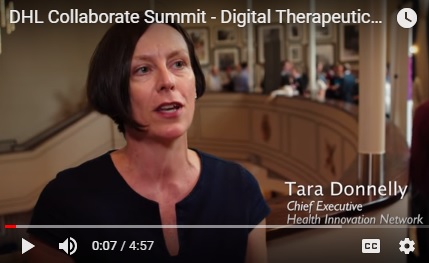Self monitoring – bridging the gap between intention and action
Posted on
In 2006, the NHS championed the view that people with long term conditions should ‘take more responsibility for monitoring their health’, yet it has failed to routinely and consistently provide people with the tools to self-monitor and share data with their health care teams. Digital self-monitoring has the potential to raise health awareness, guide people to make more informed decisions and enable new care models to emerge in the NHS. Sharing data between patient and healthcare team could improve knowledge of health behaviours and create better conversations based on real word data. The holy grail being the equal partnership between the expert of the person and the expert of the clinical condition. Services that frequently bring patients to the hospital setting for monitoring but fail to provide tools for self-assessment are by their actions, not empowering people to take responsibility for health, even if their intention is to promote self-monitoring. But how do we bridge the gap between action and intention and how can digital transformation help this?
A digital pioneer fellowship with Digital Health. London has given me a platform to tackle this issue for adults with the genetic condition, cystic fibrosis (CF). People with CF have a huge hospital appointment burden which is centred around monitoring lung health. This coupled with the prospect that NHS resources will need to accommodate a further 50% more patients by 2025 due to improved life expectancy, urgently needs a new approach to care. However, 12 years on from the call for self-monitoring, assessing lung function from home remains the exception not the norm for people living with cystic fibrosis. As a healthcare team, tasking ourselves with changing this paradigm we asked ourselves:
- What is the reality?
Self-monitoring of health is not a new concept and in the absence of endorsed digital tools, people will find their own methods. 25% of adults with CF involved in co-designing a digital solution for health monitoring had already purchased their own devices.
- What is the fear?
Self-monitoring devices may provide data that is not comparable to the hospital counterpart. In CF clinic, lung function testing is performed alongside trained clinicians, making sure there’s effort on everyone’s part to get great quality data. But in pursuing the perfect data in these perfect conditions, have we lost sight of the fact that more data, trends in data, real world data could be better for clinical decision making than the perfect snapshot? We had to ask ourselves, have we pursued this approach, fearful at the expense of empowering patients to be able to collect health data themselves?
- What is the opportunity?
Could sharing health data improve decisions and enable better, more informed conversations better patient and clinician? Self-monitoring for people with CF offers them access to remote consultations, cutting out the cost and time to travel to the clinic and importantly reducing the anxiety of cross infection. Hospital clinics can be reserved for those that need to be seen in person.
We have learnt that unlocking the real value of self-monitoring is more than the provision of the digital tool or device; it involves behaviour change, building trust and recognising the opportunity to redesign care to optimise resources and improve the care experience. This is where we will be placing our attention to bridge the gap between our intentions and our actions. At a time when there is such momentum for digital transformation in the NHS, let this be the opportunity to realise the true potential of self-monitoring.


